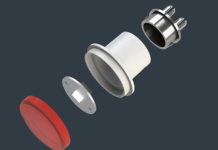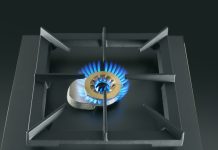The diffusion of the Internet of Things will be an achievable goal only when connected objects can speak a single language, shared by more brands.
The s

o-called Smart Home is still struggling to take off, owing to the costs deemed too high but, especially, because of the complex management that sees the pieces of this puzzle do not fit one another. We talk about that with Razvan Pitic, researcher of the Observatory Internet of Things of the School of Management of Milan Polytechnics, to understand better the reasons of these difficulties.
Conditioning and heating plants regulated by apps, remote control solutions of electric and hydraulic consumptions, connected household appliances have been available on the market for a long time now but families benefitting from these innovations are still a small minority. What hinders their diffusion?
The Smart Home ambit is one of the most interesting in the IoT scenario, considering the central role played by the home in the life of each individual. In the course of the research accomplished by the IoT Observatory of the School of Management of Milan Polytechnics, we surveyed, through an online investigation, Italian consumers’ massive interest in purchasing products for the Smart Home. Unfortunately, as it usually happens when we face complex phenomena like the adoption of domotics solutions in houses, there is not a simple answer to explain the low degree of penetration of such solutions, since we are dealing with a whole of factors that contribute, with different weights, in this outcome.

To what factors are you referring?
Concerning technophile consumers, who generally know the offer of devices for the Smart Home and succeed in installing such products with do-it-yourself modalities, buying them online or in electronics shops, the main barriers derive from the lack of interoperability among these products, with strong repercussions on users’ experience (so many hubs/gateways, several apps on the smartphone), preventing a holistic experience. For the more conservative consumers, or less acquainted with technology, the situation is even more complex, due to the persistence of other two problems, like the absence of sufficient knowledge of the solutions existing on the market and the dependence on installation modalities (specialized technicians, such as for instance the trusted electrician).
Do costs, judged still too high by many families, hinder their diffusion, too?
The issue of the cost of these solutions becomes almost secondary, being partially the fruit of the typology of approach to the Smart Home. The implementation of a complex domotics plant by expert professional figures, which generally occurs during the home restructuring and requires the invasive installation of wirings in walls, typically implies much higher costs than a “do-it-yourself” approach. On the other hand, the organized approach grants a unified experience, where the various smart devices work together, with a unified management, whereas in the case of do-it-yourself installations of various single smart devices, each managed with its own dedicated app, it results in the generation of a tower of babel, which fragments the user experience, decreasing the perceived benefit and increasing the control difficulty.
Is it possible to imagine a future in which a common language will be used?
The problem of the compatibility among the various smart home solutions is faced in various ways, mainly through the creation of alliances and consortia joined by groups of companies, interested in granting the interoperability among their products. An example are Open Connectivity Foundation and Thread. Another approach, adopted by the players that control a relevant market share, consists in imposing their own standard, open or close, hoping that other companies of the eco-system conform to it, sooner or later. The systems by Apple and Google witness it.
Where does this communication problem originate?
Unfortunately, the fragmentation problem spreads at all levels of a “smart” solution, starting from the communication protocol and reaching the applicative level. Despite the complexity and the shortage of a single approach deemed “winning”, in the last year we witnessed an acceleration of the collaborations concerning this and the starting of a certain consolidation, which lets us to be optimistic for a less fragmented future.
Analysing better the projects in course, to what level are the biggest efforts oriented?
Alliances and consortia are working hard to achieve a compatibility among devices, at all levels. Concerning the net, Thread Group, an initiative born from Nest (Google subsidiary), and promoted by hundreds of other companies such as ARM, Samsung and Qualcomm, proposes a net protocol based on IPv6 able to interconnect home appliances, irrespective of the communication protocol used. Other initiatives address an even higher level, the applicative level, to unify smart home products, still irrespective of the communication protocol used. Concerning this, the OCF (Open Connectivity Foundation), with its 300 members, adopts an open approach, defining not only a data model able to make all products implementing it mutually interoperable, but also offering a reference open source framework for developers and a certification programme. In February 2016 the AllSeenAlliance, another very relevant alliance, merged into Open Interconnect Consortium, then renamed OCF, leading to an important consolidation.

Specifically, how are instead big players operating?
They work at the creation of their own ecosystems for the Smart Home, each of them differently. Apple focuses on the controlled and certified approach through the Home Kit initiative. Google ha instead created an operating system for the IoT, Brillo, recently renamed Android Things, using the same winning formula of Android, i.e. an open source model, able to facilitate the adoption by developers and OEM. Finally, Samsung is pursuing the interoperability through the open SmartThings platform, to mention only some of the initiatives in progress.
Have they demonstrated that through a common language, based on open protocols, it is possible to oversee the operation of a set of connected products?
The problem of the interoperability among connected products was, and still is, faced at all levels, from the communication protocol up to the applicative component. In the course of past years, they worked hard at low level, of communication (for instance: ZigBee vs ZWave), however today they are working at all levels, including the applicative one. The signs recently grasped show that the open approach, unlike a close one, proprietary, seems to take hold, with a series of relevant announcements. The Thread protocol, for instance, was made open source in 2016, OCF released a reference open source implementation (IoTivity).
Might the Smart Appliances REFerence (SAREF) ontology model prove the winning one?
Today the unified management model of devices based on ontologies or data models seems to be prevailing in various initiatives. Certainly, the availability of a standard defined by an international reference body like the European Telecommunications Standard Institute (ETSI), integrated into ETSI M2M architecture, should help the SAREF model in standing out in this highly complex and fragmented ambit, however I think it is premature to express a final verdict about this matter. We must wait and see if and how the main consortia, alliances and organizations will adopt that model and will diffuse it in their business ecosystems.
Then, is only a standard software, finally allowing domestic users to manage the ecosystem of their homes with few clicks, likely to miss?
Theoretically, when household appliance manufacturers implement the Saref ontology in their devices (eventually through a reference model), and supply a series of API or SDK for developers, it will become very easy to create applications able to communicate, and then to manage, all these devices in integrated manner. The existence of an eventual certification programme might help in avoiding inter-compatibility problems among different implementations of the standard carried out by producers.
How much time will be still necessary so that connected devices can exchange precious information to allow, for instance, users to optimize the energy use?
Gradually the various pieces of the puzzle are fitting one another, enabling the various devices to communicate mutually. The diffusion of voice-control systems of smart devices is expected to be a step forward towards the right direction, boosting the various producers to make their devices compatible with an external control system, based on Alexa by Amazon, on Google Now, on Siri by Apple, on Cortana by Microsoft or on another further system.




